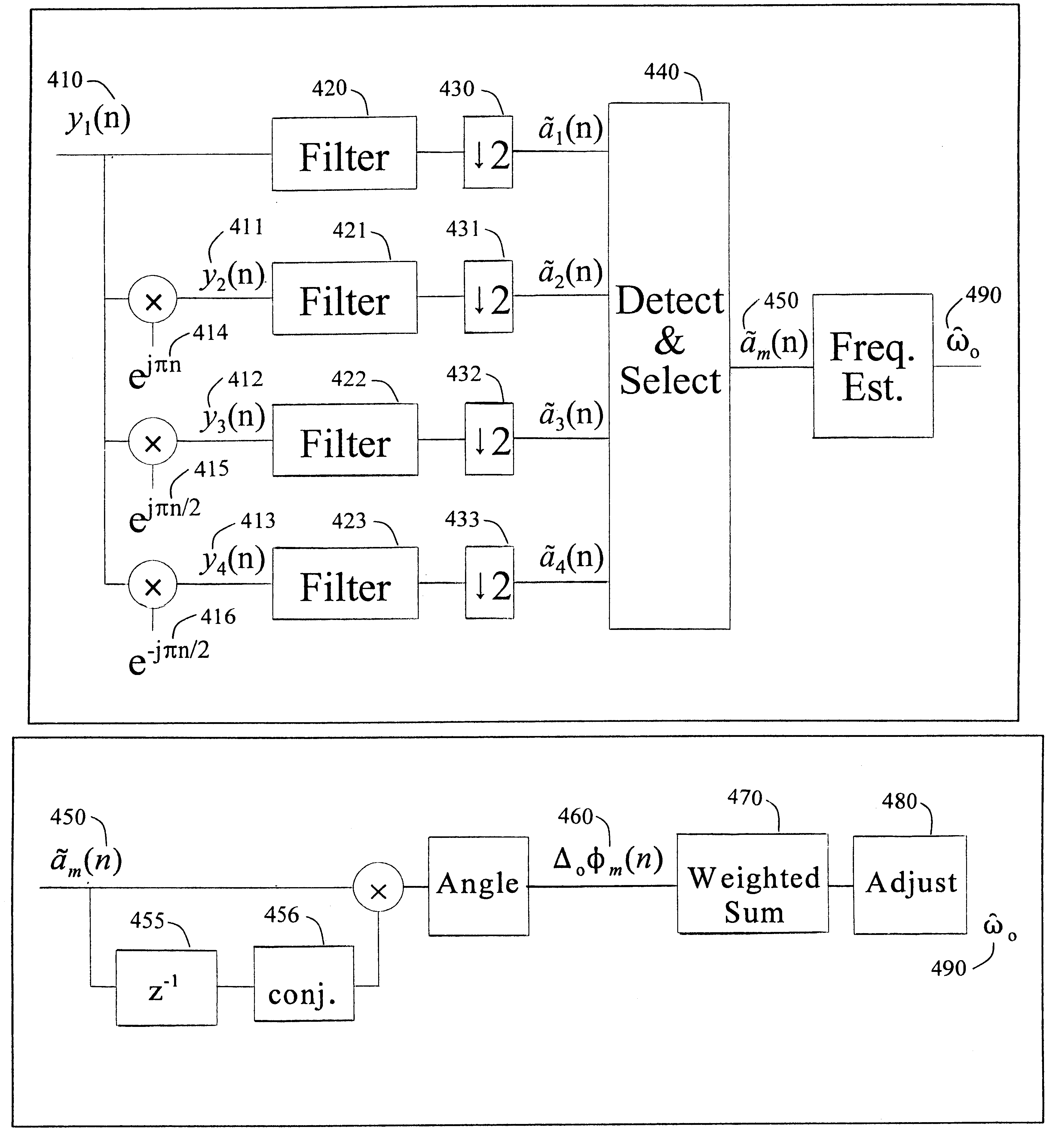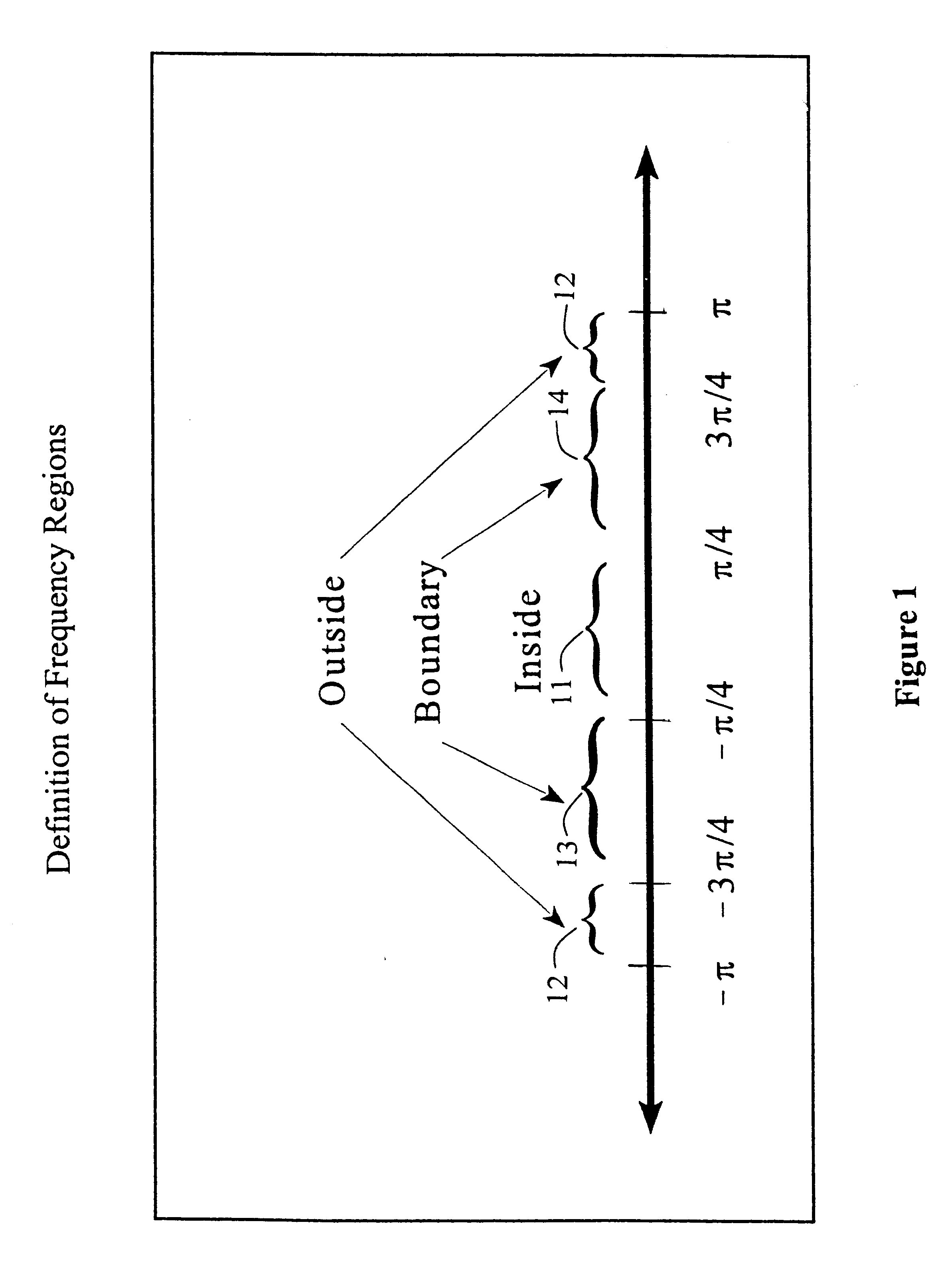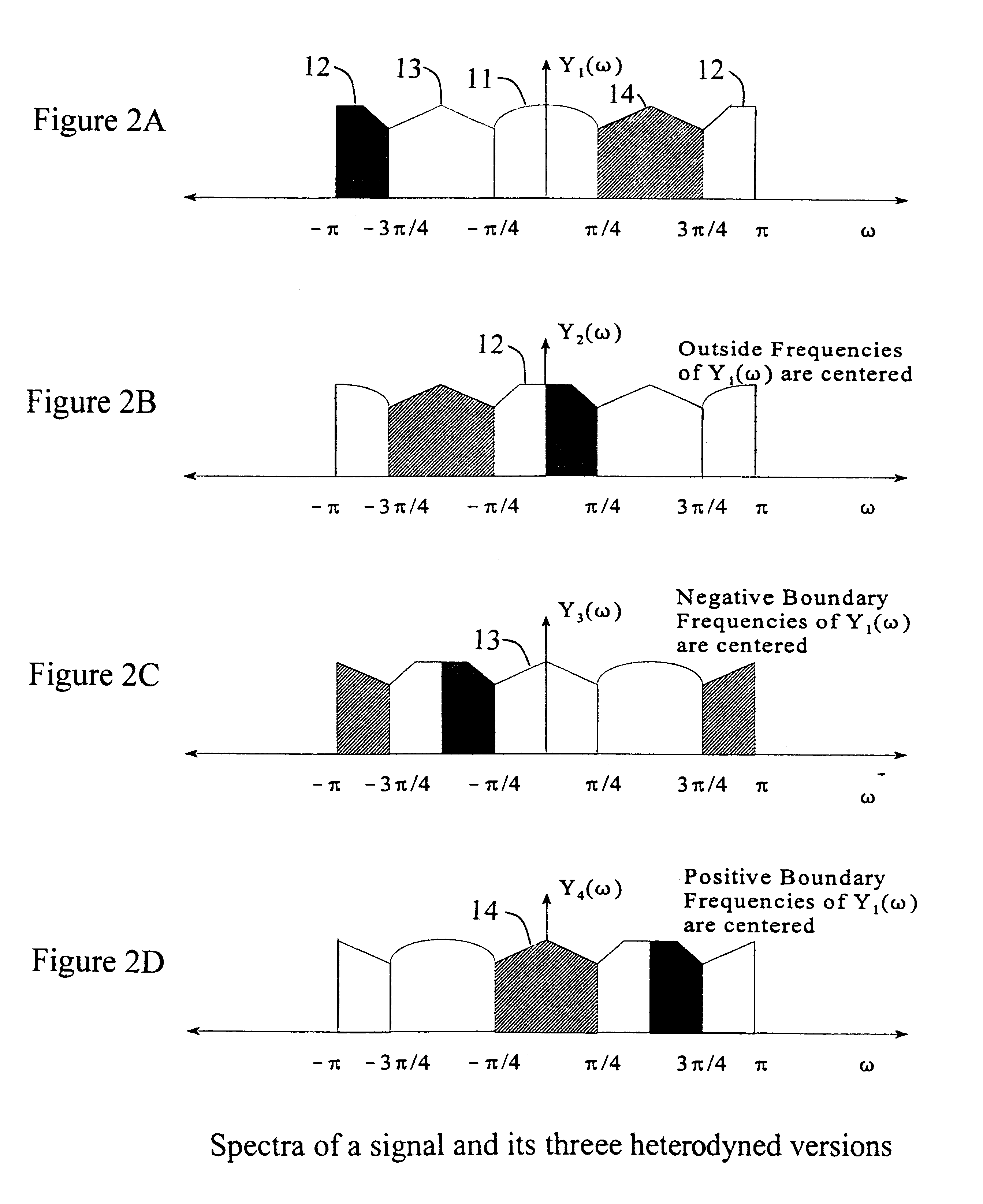Phase-based frequency estimation using filter banks
a phase-based, frequency-estimating technology, applied in the direction of instruments, measurement devices, electrical equipment, etc., can solve the problems of estimating the frequency of a sinusoid, the variance of the estimate rapidly increases, and the frequency estimation technique typically suffers from a threshold
- Summary
- Abstract
- Description
- Claims
- Application Information
AI Technical Summary
Benefits of technology
Problems solved by technology
Method used
Image
Examples
Embodiment Construction
Referring now to the drawings, and more particularly to FIG. 1, there is shown a definition of frequency regions: a frequency within (-.pi. / 4, .pi. / 4] radians / sample is called an inside frequency 11, a frequency within (-.pi., -3.pi. / 4].orgate.(3.pi. / 4, .pi.] radians / sample is called an outside frequency 12, and a frequency within (-3.pi. / 4, .pi. / 4].orgate.(.pi. / 4, 3.pi. / 4] radians / sample is called a boundary frequency (negative boundary 13 and positive boundary 14). Kay's method works well for inside and boundary frequencies, while the method of Kim et al. works only for inside frequencies, but with a lower threshold than for Kay's method.
From the original signal y.sub.1 (n) the succeeding signals y.sub.2 (n), y.sub.3 (n), and y.sub.4 (n) are created by digitally heterodyning y.sub.1 (n) with e.sup.jnn, e.sup.jn / 2n, and e.sup.-jn / 2n, respectively. This is equivalent to multiplying y.sub.1 (n) by the sequences {1, -1, 1, -1, . . . }, {1, j, -1, -j, 1, j, -1, -j, . . . }, and {1, -j,...
PUM
 Login to View More
Login to View More Abstract
Description
Claims
Application Information
 Login to View More
Login to View More - R&D
- Intellectual Property
- Life Sciences
- Materials
- Tech Scout
- Unparalleled Data Quality
- Higher Quality Content
- 60% Fewer Hallucinations
Browse by: Latest US Patents, China's latest patents, Technical Efficacy Thesaurus, Application Domain, Technology Topic, Popular Technical Reports.
© 2025 PatSnap. All rights reserved.Legal|Privacy policy|Modern Slavery Act Transparency Statement|Sitemap|About US| Contact US: help@patsnap.com



